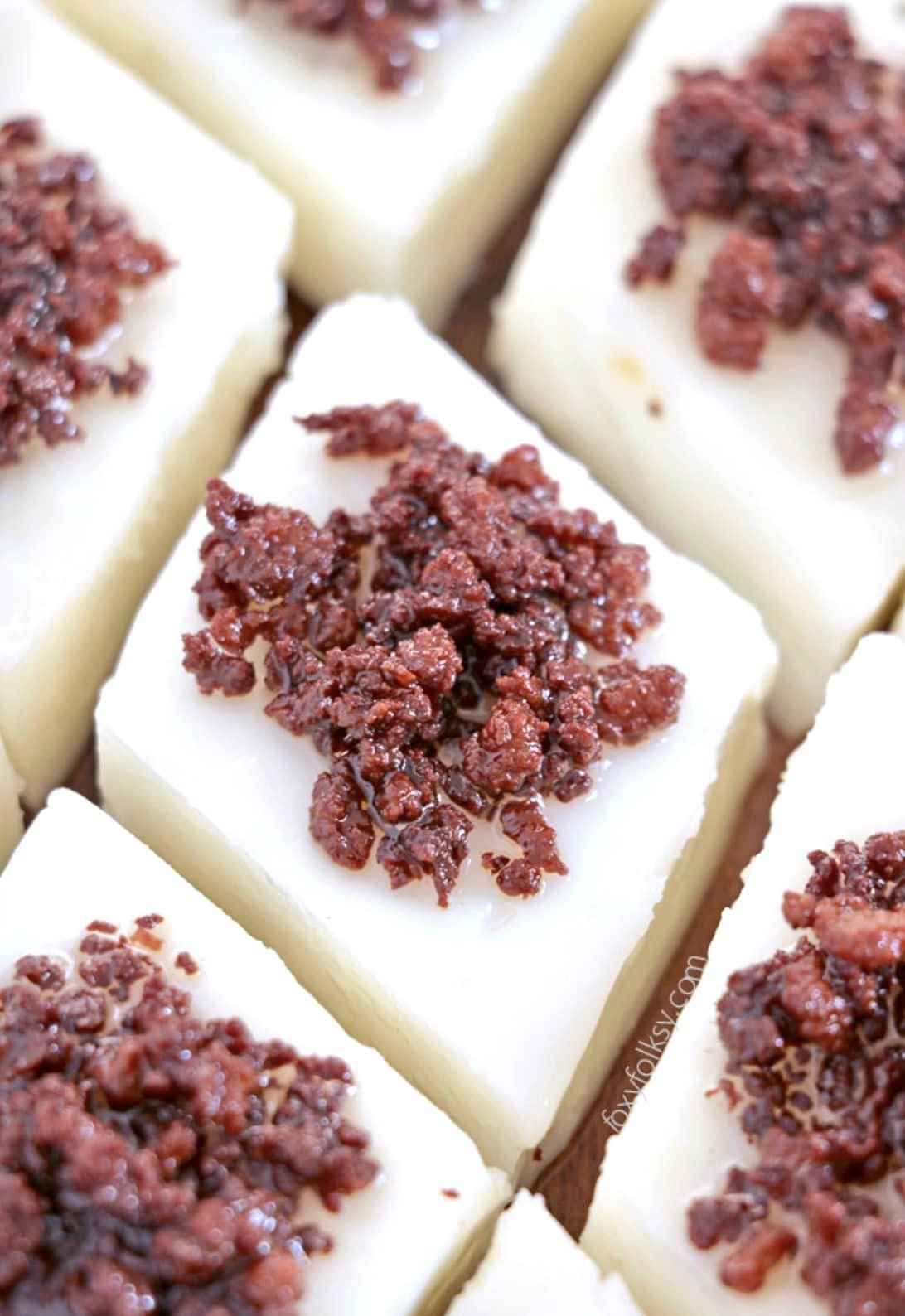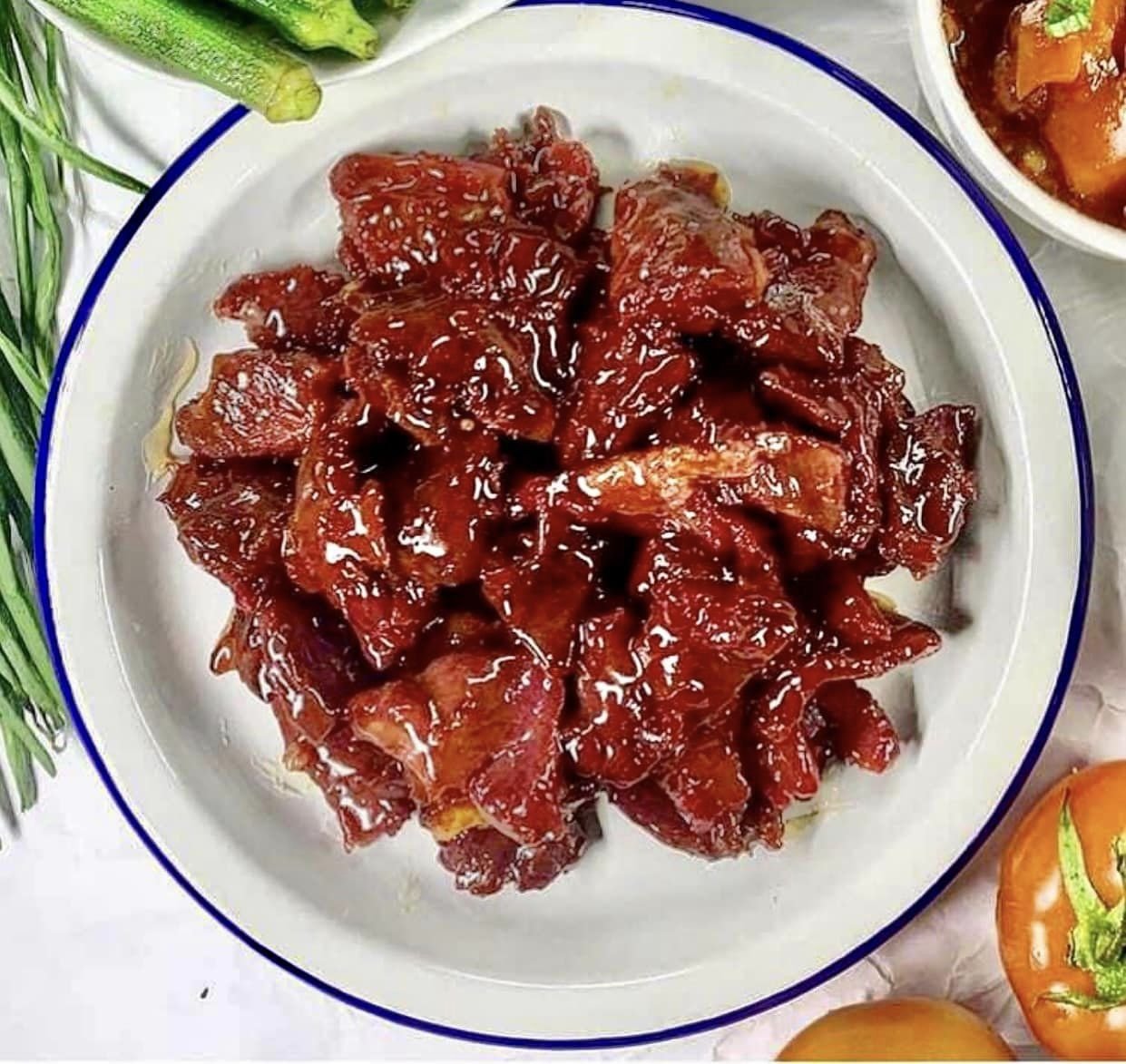10 Reasons Pampanga Is the Undisputed Culinary Capital of the Philippines
/Kamamaru (Source: Robby Tantingco/facebook)
1. IN PAMPANGA, FOOD IS THE MAIN TOURIST ATTRACTION. We have the country’s best airport to bring tourists in, the world-class hotels to accommodate them, the culture and history to impress them, and the food to keep them coming back for more!
Ask anyone who’s ever stayed here, or just made a stopover or attended a seminar or conference, what he remembers most about Pampanga, and the answer always comes in capital letters with three exclamation points—THE FOOD!!! Tourists always look for pasalubong (gifts) and in Pampanga, they can’t make up their minds what to buy and bring home—will it be tibuk-tibok and sans rival? Turrones de kasuy and sanikulas? How about a bag of tocino and longganisa or a packet of pindang damulag? Or a box of ensaimada and a tray of patcu and polvoron? Maybe a bottle of tabang talangka or a jar of peanut paste for suklating batirul? If it won’t smell, they’ll get buru as well, and if it won’t spoil, pansit luglug, too!
What Government Can Do: Accredit and regulate pasalubong stores to maintain quality standards and support micro-businesses to ensure sustainability of their products. Identify the unique dish and dessert per town in the province and launch a One Dish, One Town campaign similar to the One Product, One Town campaign.
Tibuk-tibok (Source: Robby Tantingco/facebook)
2. KAPAMPANGANS TALK ABOUT FOOD ALL THE TIME. They discuss, dissect, and debate food while it’s still being cooked, when they’re already eating it, and after they finish clearing the table. They saturate Facebook and Instagram with their daily meals (hashtag #mybreakfast, #mylunch and #mydinner) and they like showing off their versions of their favorite dish—not just asado but asadong malangi, not just any adobo but adobong matua or adobong maputi. If you offer them sisig, he will specify if it’s Aling Lucing sisig, or Trellis sisig, or Mila’s sisig. If you treat them to halo-halo, ask first if he prefers Razon’s or Kabigting’s or Susie’s. And if you invite them to your party or fiesta, prepare to serve only the best because they feel entitled to good food and anything less is a personal insult.
What Government Can Do: Kill all efforts to standardize dishes and to promote only one version, because the beauty and strength of Kapampangan cuisine lies in its variety, versatility, and flexibility.
Tocino (Source: Robby Tantingco/facebook)
3. IN PAMPANGA, EVERYONE COOKS AND EATS WITH EQUAL PASSION. Kapampangans are both gourmets (avid food connoisseurs) and gourmands (avid food consumers). Every mom is an iron chef with an entire household to feed and to please, and every dad, son, and daughter is a food critic with a strong opinion on everything mom cooks. Cooking is every girl’s rite of passage to womanhood (as circumcision is every boy’s to manhood), and marriages rise and fall based on the spouse’s weight gain or weight loss. The most heavily guarded family heirlooms are not lola’s old love letters but her secret recipes.
Kapampangans would rather eat at home than eat out, and the only reason they dine outside on weekends is to give their palate a break from the week-long pampering at home. This is also why carinderias and turo-turos outnumber restaurants in Pampanga—because they serve lutong bahay (home-cooked meals) which restaurants try hard to match but often fail. Kapampangans will drive everywhere and anywhere in search of an original dish. They will park along railroad tracks, sit beside a smoky grill, and eat inside a hole in the wall as long as the food is good. And they will risk diabetes and dialysis as long as they die mabsi (full) instead of makamulagat (starving), which is why you sometimes see a small plate of Lipitor on the buffet table and find diagnostic labs everywhere in the province.
What Government Can Do: Mandate barangays to collect, document, and revive old family recipes and fund research on plant-based dishes and healthy versions (less fat, less salt, and less sugar) of popular Kapampangan dishes, without losing the original flavor.
4. KAPAMPANGANS CAN TRANSFORM THE LOWLIEST, UGLIEST AND UNLIKELIEST CREATURE INTO A DELICACY. No reptile or amphibian, snake or snail, and rat or bat is safe in the Kapampangan kitchen! Mole crickets magically turn into haute cuisine as adobung camaru, frogs as betute and tinolang tugak, and those living, crawling little black crabs into burung talangka. When Kapampangans butcher a pig they will throw nothing away—the pig’s brain becomes bistig utak, its ears sisig matua, its cheeks tokwa’t babi, its skin pititian, its hooves and knuckles paksing pata, its tail kari-kari, its lungs pulutuk, its heart, liver and kidneys kilayin, and the rest of the entrails tidtad and paksing iso.
What Government Can Do: Stage cooking demonstrations, interactive food preparations, culinary competitions, and farm-to-market food festivals plus cultural presentations and musical performances to make the tourists’ visits more memorable. Clean up and repair public markets and set hygiene and cleanliness standards for production, transport, sale, and preparation of food.
Betute (Source: Robby Tantingco/facebook)
5. PAMPANGA IS HOME TO LEGENDARY CHEFS. Two grand dames of Filipino cooking are Kapampangans—Nora Daza, who pioneered Filipino restaurants in Paris and New York, and Clarita Reyes Lapus, the name behind Mama Sita’s. The chefs who are famous for re-imagining Filipino cuisine are also Kapampangan--Claude Tayag, Sau del Rosario, Sandy Daza, Gene Gonzalez (who founded the Center for Asian Culinary Studies), and Jam Melchor (who founded the Philippine Culinary Heritage Movement). There’s a Kapampangan chef (Michael Alim) in the world’s oldest restaurant (Madrid’s Restaurante Botin, founded in 1725) and another Kapampangan (Timothy Flores) in the first Filipino restaurant to receive a Michelin star (Kasama located in Chicago, which is also one of America’s top three new restaurants in 2022. The country’s top restaurateurs come from Pampanga as well: Larry Cruz whose Café Adriatico and Bistro Remedios reinvented the Malate district, and his Abè Restaurant helped raise the bar for Filipino fine dining; Ricco Ocampo who did the same for casual dining with his Kai, Osake, Kitchen, and Mangan restaurants; and Maritel Nievera who made eat-all-you-can dining fashionable with her buffet restaurant chain Cabalen.
What Government Can Do: Give these Kapampangan culinary achievers local recognition and exposure to inspire young Kapampangans to go into the food business.
6. THE BEST RESTAURANTS IN PAMPANGA ARE ALL HOMEGROWN. And the most popular items in their menu are the Kapampangan dishes and desserts—morcon and arobung camaru at the iconic Everybody’s Café, betute and pindang damulag at Apag Maranglé, bulanglang bangus at Abe’s Farm, pakú salad and tokwa’t baboy at Mila’s, begukan and putung babi at Lola Nor’s, bobotung bangus and sanikulas at Atching Lillian’s, pansit luglug at Susie’s, the Kapampangan pizza at Camalig, pugon liempo wrap at Denlim’s, adobung balut at Balé Kapampangan, kare-kare and buro at 25 Seeds, aligue pasta at The Souq, and all the cornucopia of gastronomic treats at Cely’s, Binulo and Matam-ih with special mention of Toll House, Didi’s, and Angeles Fried Chicken. But if you want to experience Kapampangan cuisine at its best, go to a town fiesta or any piyestang baryu—that’s where families even get the services of cooks-for-hire who arrive with a jeepload of their own pots and pans two days in advance to parboil (sinkotsa) the meats and take over the kitchen until the fiesta is over. These unnamed and unsung cooks in the barrio are as good as the best chefs in the city.
What Government Can Do: Set up a Michelin-style ranking system for restaurants and provide tax rebates, free advertising, and other rewards and incentives.
Turrones de kasuy (Source: Robby Tantingco/facebook)
7. PAMPANGA WAS ALREADY A CULINARY DESTINATION CENTURIES AGO. National and foreign leaders traveled regularly to Pampanga for the fabulous banquets in La Sulipeña, the Arnedo family mansion in Sulipan, Apalit. The Spanish Governor-General and the Archbishop of Manila brought along their foreign guests, including the Duke of Edinburgh who came in 1869, King Norodom I of Cambodia who overstayed in 1872 to pursue a girl from next-town Calumpit, and the Grand Duke Alexis Alexandrovich, uncle of the ill-fated Czar Nicholas Romanov, who said in 1891 that La Sulipeña “presented one of the most brilliant sights” he had ever seen. The future US President William Howard Taft visited and devoured three plates of ginataan (stew of sweet potato, jackfruit, flour balls and coconut milk), and Kapampangan cooks prepared the banquets during the course of the Malolos Congress in Barasoain in 1898.
What Government Can Do: Include Kapampangan cuisine in the school curriculum, so that young Kapampangans will grow up appreciating their culinary heritage and its role in shaping their local history and cultural identity. Mandate all hospitality management (hotel and restaurant management) schools in Pampanga to become showcases of Kapampangan cuisine and Kapampangan culinary research centers.
8. KAPAMPANGANS TREAT THEIR CUISINE WITH RESPECT AND REVERENCE. Every dish they cook reminds them of their history, and every meal they eat recounts the story of their ancestors’ struggle and suffering. Kapampangan cuisine is divided into pamangan kalulu (food for the poor) and pamangan makualta (food for the affluent), sometimes called pamangan pang aldo-aldo (everyday food) and pamangan pang-fiesta (food for special occasions), recalling the days of landlords and peasants, revolts and retributions, and the cycle of plenty and scarcity caused by the recurring seasons of flood. As a result, Kapampangans learned to turn their farm lands into fish ponds and to preserve their catch and harvest by curing meat as pindang and tocino, and fermenting their rice and fish as burung asan. When Kapampangan men were hauled off to the shipyards to build galleons, the women and children who were left behind never went hungry because they improvised soups out of bitter herbs (sabo maligosu), and they stewed vegetables in vinegar sans meat (paksing demonyus) and they poured water on rice as substitute for carabao’s milk (gatas tigri)—the Kapampangan equivalent of the Jewish seder during Passover.
What Government Can Do: Apply for national historical markers to memorialize these events that highlight the role of food in Kapampangan history, and popularize folk dishes by encouraging restaurants to include them in their menus.
9. KAPAMPANGAN FOOD IS THE BEST EXAMPLE OF THE EAST-WEST FUSION OF FILIPINO CUISINE. Because Kapampangans were more privileged than other Filipinos during colonial times, they enjoyed the kind of Spanish favoritism that gave them exclusive access to the royal army, the royal academy and of course, the friar’s kitchen, where they learned to create bringi by mixing Spanish paella with Indian biryani, and suklating batirul by putting ground peanuts into the cocoa paste. They reinvented curry as kari-kari and innovated the Spanish nougat as the incredible turrones de kasoy wrapped with edible kiping (paper made from glutinous rice), which non-Kapampangans foolishly peel before eating. Kapampangans also enjoyed unlimited access to American food culture because the province hosted the United States’ largest off-shore military base for almost 100 years. Kapampangans cooked for US servicemen in their mess halls, and took home ribeye and filet mignon leftovers to convert them into pikinisan, their stateside version of pagpag. And when Mt. Pinatubo closed down Clark Air Base, these cooks took their culinary skills off base and put up their own steak houses. There’s even an entire neighborhood of steak grills called Steak Street, and President Noynoy Aquino often had to sneak out of Malacañang to have his favorite steak in a narrow alley in Balibago, Angeles City.
What Government Can Do: Launch a national and even an international campaign promoting Kapampangan cuisine, as a supplement and enrichment to the ongoing campaign promoting Filipino cuisine.
10. INTERNATIONAL VALIDATION HAS CONFIRMED EVERYTHING KAPAMPANGANS SAY ABOUT THEIR FOOD. The claims weren’t empty after all. The New York Times has called sisig “arguably the greatest pork dish on earth.” Anthony Bourdain said that sisig “is everything I love about food,” and now Conde Nast, the global media company that’s home to iconic brands like Vogue, GQ and Vanity Fair, has described Kapampangan cuisine as “most exciting and consistent” and listed Pampanga as one of the Top 13 Unsung Food Destinations of the World—the only place in the Philippines that made the list. And Conde Nast has praised not just sisig but other Kapampangan foods like tocino, morcon, the much-maligned buro, sanikulas and turrones de kasoy.
What Government Can Do: Make the claim official through local legislations, from Sangguniang Bayan to Sangguniang Panlalawigan to Batasang Pambansa.
Posted with permission from the author’s Facebook page
Logo by Leonardo Calma
Photos courtesy of Amiable foods, Everybody’s cafe, Apag Marangle, Pampanga Culinary Council and Foxy Folksy
Robby Tantingco is the Director of the Center for Kapampangan Studies and Vice President for External Affairs of Holy Angel University. He is the author of "Destiny and Destination" and "Pinatubo: The Volcano in our Backyard" which won a National Book Award.
Click here for more articles by Robby Tantingco







